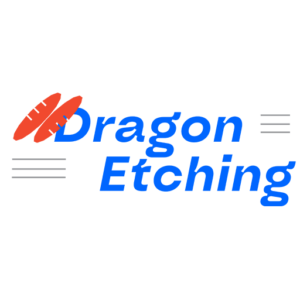Aluminum etching is a crucial process in various industries, including electronics, aerospace, and automotive manufacturing. This guide will describe several commonly used etchants for aluminum and provide an example of an application where each etchant is utilized. Additionally, we’ll delve into the specifics of preparing and using a common aluminum etchant, including temperature, concentration, and safety precautions.
Commonly Used Aluminum Etchants
- Sodium Hydroxide (NaOH)
Applications:
- Microfabrication: Sodium hydroxide is used in microelectronics to etch aluminum layers during the fabrication of integrated circuits.
- Aerospace Industry: Aluminum parts and components in the aerospace industry are etched with sodium hydroxide to achieve precision and reduce weight.
Setting Parameters:
- Temperature: The typical operating temperature for sodium hydroxide etching is between 60°C and 70°C (140°F to 158°F).
- Concentration: A common concentration is around 20-30% sodium hydroxide in water. Ensure thorough mixing for consistency.
- Etching Time: The etching time varies depending on the thickness of the aluminum layer but usually ranges from 2 to 10 minutes.
- Agitation: Employ an agitation mechanism within the etching equipment to maintain even etching and prevent the accumulation of byproducts.
Setting Parameters in an Aluminum Etching Operation
For an effective aluminum etching operation using sodium hydroxide as an example:
Temperature:
- Verify the etching machine’s temperature control settings and set it within the specified range of 60°C to 70°C.
Concentration:
- Measure the required amount of sodium hydroxide accurately and mix it with water to achieve the desired concentration (e.g., 20-30%). Use calibrated instruments for precision.
Etching Time:
- Determine the appropriate etching time based on the thickness and material of the aluminum. Start with a shorter time and adjust as necessary. Typically, a 4-6 minute initial test run is a good starting point.
Agitation:
- Ensure that the etching equipment includes an agitation system to keep the sodium hydroxide solution well-mixed during the etching process.
Safety:
- Always prioritize safety when handling chemicals. Wear suitable personal protective equipment (PPE) such as gloves, safety goggles, and lab coats. Maintain a well-ventilated workspace equipped with safety showers and eyewash stations.
Waste Disposal:
- Properly dispose of used etchant solutions in accordance with local regulations. Many etchants are hazardous waste and should be handled and disposed of appropriately.
If you have an aluminium etching project that you need help with, please contact us

